44 dangerous goods class labels
Dangerous Goods Labels - JALCARGO Miscellaneous Dangerous Goods: RMD: MARK: Substances or mixtures dangerous to the aquatic environment. Keep people and cargo away under instructions of the supervisor. TS_30_130520 (PDF Approx 39KB) Handling Labels Cargo Aircraft Only: CAO: Transport permitted on Cargo Aircraft only. (Forbidden on Passenger Aircraft) TS-DG210 (PDF Approx 540KB) Cryogenic Liquids: RCL Hazard Class Labels - DOT Hazmat Labels for Hazmat ... - Labelmaster Available for Hazard Classes 1 through 9 in Worded, Personalized, Blank, International Wordless and more, our Hazmat labels feature outstanding durability to withstand even the most abrasive elements and harsh environments. Designed with long-life UV inks that resist peeling, these labels won't fade or fall off.
› dangerous-goods › how-to-shipHow to Ship Dangerous Goods | FedEx FedEx Express is a world leader in the transport of dangerous goods and has specialists on staff to assist with dangerous goods questions. Shipments with dangerous goods must be tendered to FedEx Express in accordance with current International Air Transport Association (IATA) regulations for air transport and the FedEx Express Terms and Conditions.
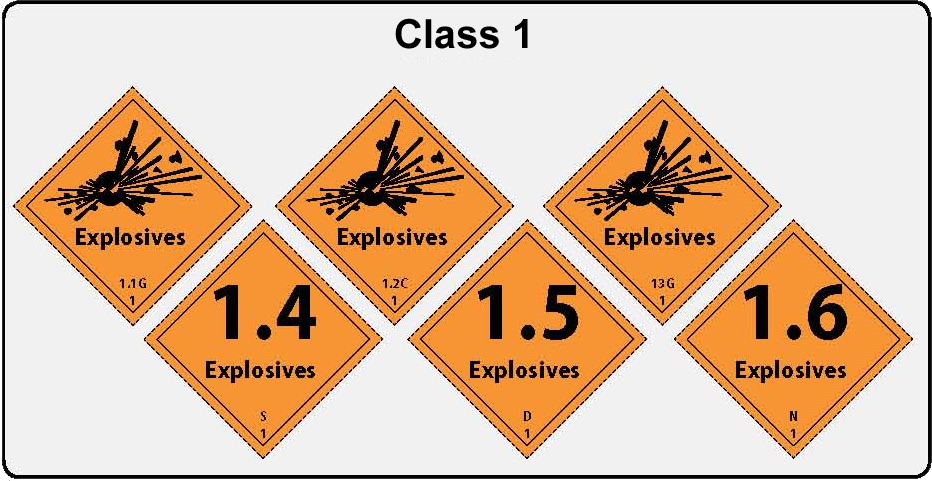
Dangerous goods class labels
› australian-dangerous-goods-codeAustralian Dangerous Goods Code | National Transport Commission The Australian Code for the Transport of Dangerous Goods by Road & Rail (ADG Code) sets out the requirements for transporting dangerous goods by road or rail. It is important that everyone involved in transporting dangerous goods understands their responsibilities to help prevent and reduce damage to people, property and the environment. DANGEROUS GOODS: CLASSES AND LABELING - Transped Dangerous goods are classified according to the type of risk they represent. The United Nations Economic Commission for Europe (UNECE) distinguishes nine classes or categories. Class 1. Explosive materials and objects. Class 2. Gases. Class 3. Flammable liquids. Class 4. Flammable solids. Class 5. Oxidizing substances and organic peroxides. Class 6. PDF AS 1216-2006 Class labels for dangerous goods Class labels for dangerous goods SECTION 1 SCOPE AND GENERAL 1.1 SCOPE This Standard sets out details of the design and selection of labels appropriate to the classes, divisions and subsidiary risks of dangerous goods as designated in the Australian Dangerous Goods Code (ADG Code). An illustration of each Class label, the Elevated
Dangerous goods class labels. Dangerous Goods Classes and Symbols - chemsafetypro.com There are 9 dangerous goods classes. Substances (including substances and mixtures), and articles are assigned to one of the following 9 classes according to the most predominant hazards they pose in transport. Some of the classes can be further divided into divisions, e.g., Class 1, while others do not have sub-divisions, e.g., Class 3. Dangerous Goods Labels Class 4.3 - Labelident Self-Adhesive Hazardous Materials Shipping Labels for shipments of Hazardous Materials (Dangerous Goods) in accordance with safety standards when shipping dangerous goods. Dangerous goods are assigned to one of nine classes depending on the main danger presented. Class 4.3 - Water reactive materials or Dangerous When Wet - A substance that, on ... adrdangerousgoods.com › eng › articlesClasses 1-9 of dangerous goods explained Jun 22, 2017 · The classes are part of the United Nations-based system of identifying dangerous goods, and are used within many different subsystems such as the ADR, RID, IMDG and DGR for classifying dangerous goods and hazardous materials. Class 1 Explosive substances and articles. Class 1 contains substances and articles which pose a hazard due to explosion. GHS pictograms | UNECE the pictograms for transport of dangerous goods (usually referred to as "labels" in transport of dangerous goods regulations) applicable to transport classes for which an equivalent GHS hazard class exists. For hazard communication elements (labels and marks) applicable to other transport classes or transport conditions covered by transport of ...
Competency Based Training - Online Dangerous Goods Training As part of the compentency based training program, you will need to define. a) The skills, knowledge and attitudes that your employee requires to perform the dangerous goods job functions. c) How you can assess the employee meets the requirements of the regulations. we can help your organization review the requirements for your employees and ... Labelling of dangerous goods: Ordering of ADR labels online | HERMA ADR labels in format 100x100 or 250x250 mm plus ADR warning plate labels. Standardised, ADR-compliant hazard labels in format 100x100 mm, on a roll. Placards in format 250x250 mm as single sheets. Custom placards with UN numbers as per ADR, starting at a batch size of 1. Orange self-adhesive ADR warning plates in format 400x300 mm, with ... › safety-and-preventionHazardous chemicals and dangerous goods | WorkSafe.qld.gov.au Dangerous goods (DG) is the name given to the group of chemicals and articles (i.e. goods) classified as dangerous for transport by road, rail, air or sea. The DG classification systems focus on goods with predominately acute hazards to safety, the environment or the road and rail transport vehicle. Dangerous goods labels | Noatum Logistics - Global The label has a white or yellow/white background depending on the level of radioactivity of the goods. Class 8: Corrosive substances. Icon with two pipettes on a black and white background with the word "Corrosive". Class 9: Miscellaneous dangerous substances. The label has black and white stripes at the top, with a white background on the ...
Dangerous goods class sign & Hazchem labels explained! Dangerous goods class sign for these solids have a white top half, and a red bottom half, a bit like the Polish flag. Subclass 4.3: dangerous when wet Yes, you heard us right! Certain solids like calcium, sodium and magnesium can create a chemical reaction when exposed to water or moisture. Dangerous Goods Labeling & Marking Guide | Klinge Corp Dangerous goods require proper handling, shipping and storage to protect your health and property. Types of Dangerous Goods Labels The National Code of Federal Regulations lists nine classes of dangerous goods and dangerous goods class labels: Class 9 Dangerous Goods Labels | Labels Online ADR regulations require all packages containing dangerous goods to have a warning label and that the label shall be in the form of a square at an angle of 45° (diamond shaped). Our Class 9 Dangerous Goods Labels fully comply with IATA/ ICAO, UN ADR/RID and IMDG/IMO requirements and the base material conforms with BS 5609:1986. Information on hazardous chemical labels | Safe Work Australia A hazardous chemical is correctly labelled if it is packed in a container and has a label written in English. Pictograms and text on the label should be clear. The label must also be firmly fixed to the hazardous chemical's container. It should not be hidden or in a spot where it could be removed, such as on the lid. The label must include the:
› Topics › TDGClass 7 Dangerous Goods Radioactive Material - ChemSafetyPro.COM Jan 07, 2016 · Class 7 Dangerous Goods Examples. Commonly transported class 7 dangerous goods include enriched uranium, radioactive ores, isotopes and some medical equipments or parts. Class 7 Dangerous Goods Label. The picture below shows hazard symbols for Class 7 dangerous goods. More info about the marking and labelling of dangerous goods can be found here.
Dangerous Goods Labels/Packaging Labels Archives - Labeline.com All our range of Dangerous Goods Labels Comply with International Dangerous Goods Regulations for IATA, ICAO, IMDG, ADR,CFR. DG Label Tests & Compliance. When you purchase dangerous goods hazard labels you should check and test that they comply with BS5609 specification and regulation standards. At Labeline we test labels at our tidal salt ...
PDF Guidance Note 042 Class 4.3 - Substance which emits flammable or toxic gases when wet. (Blue background) Class 5.1 - Substances likely to increase the risk and intensity of fire in other materials. (Yellow background) Class 5.2 - Substances that are thermally unstable and likely to react dangerously with other substances. (Yellow background) Class 6.1
Hazmat Labels, Hazmat Placards, and Hazmat Markings - Labelmaster Hazard Class Labels are standard hazmat identifiers, designed to meet regulations. Each label has markings that tell what type of hazard is identified on the label. ... making shipping and handling dangerous goods a safer process. They help employers communicate hazards - employers use hazard labels to alert employees of potential hazards of ...
Dangerous Goods Labels | Labels Online ADR regulations require all packages containing dangerous goods to have a warning label and that the label shall be in the form of a square at an angle of 45° (diamond shaped). All our Dangerous Goods Labels fully comply with IATA/ ICAO, UN ADR/RID and IMDG/IMO requirements and the base material conforms with BS 5609:1986.
Dangerous Goods Labels and Stickers Printing - Label Power GHS Chemical labels and Dangerous goods label stickers are useful to identify chemical containers or hazardous materials that can be highly flammable, dangerous when wet or produce toxic gas. Label Power manufactures a large range of dangerous goods labels such as: corrosive, explosive, flammable, irritant, infectious, toxic and many more.
Dangerous Goods Labels | ANA Cargo Class/Division Code Description Label/Mark Example Emergency Action; 1 1.3 REX RCX RGX Explosives: PDF: Signals, distress. Articles and substances which have a fire hazard. (Cargo Aircraft only) Leakage: Reposition container to minimize leakage or contact with other cargo if you can do it without risk. 1.4 RXB RXC RXD RXE RXG: Explosives: PDF: Squibs, fuse.
Dangerous Goods Classification, Labels & Declaration - DG Packaging Pte Ltd Dangerous Goods Classification Dangerous Goods Labels Do check the UN GHS regulations to find the appropriate label for your dangerous goods. Our labels meet the standards of 49 CFR, ICAO and other international air regulations. They are also made with strong adhesives that make it suitable to stick on different surfaces. Expert Advice For
Dangerous Goods Safety Marks - Transport Canada The dangerous goods have a gross mass greater than 1,000 kg, are included in the same class and are offered for transport by one consignor; The dangerous goods require an emergency response assistance plan (ERAP); The dangerous goods are included in one of the following classes: Class 1, Explosives; Class 2.3, Toxic Gases;
Dangerous Goods Labels Class 2, Subclass 2.2 - Labelident dangerous goods labels, paper, 100 x 100 mm. dangerous goods labels, class 2.2, not flammable and toxic gas, 2, paper, green-black, 100 x 100 mm, 1000 labels. material: paper. label adhesive: permanent. core diameter: 3 inch (76.2 mm) piece (s):
› operations-safety-and-travelDangerous goods classes and hazard labels | Civil Aviation ... Below are the 9 hazard labels for the 9 classes of dangerous goods. Class 1 Explosives Class 1 explosives This includes items such as: explosive substances pyrotechnic devices ammunition fireworks detonators. Class 2 Gases Class 2 gases These can be transported as compressed, liquefied, refrigerated liquefied or gas in solution.
en.wikipedia.org › wiki › Dangerous_goodsDangerous goods - Wikipedia Dangerous goods, abbreviated DG, are substances that when transported are a risk to health, safety, property or the environment.Certain dangerous goods that pose risks even when not being transported are known as hazardous materials (syllabically abbreviated as HAZMAT or hazmat).An example for dangerous goods is hazardous waste which is waste that has substantial or potential threats to public ...
Class 9 Misc. Dangerous Goods Hazmat Labels | Vinyl or Paper Class 9 Misc. Dangerous Goods Hazmat Labels. "The background on the CLASS 9 label must be white with seven black vertical stripes on the top half. The black vertical stripes must be spaced, so that, visually, they appear equal in width to the six white spaces between them. The lower half of the label must be white with the class number ''9 ...
PDF AS 1216-2006 Class labels for dangerous goods Class labels for dangerous goods SECTION 1 SCOPE AND GENERAL 1.1 SCOPE This Standard sets out details of the design and selection of labels appropriate to the classes, divisions and subsidiary risks of dangerous goods as designated in the Australian Dangerous Goods Code (ADG Code). An illustration of each Class label, the Elevated
DANGEROUS GOODS: CLASSES AND LABELING - Transped Dangerous goods are classified according to the type of risk they represent. The United Nations Economic Commission for Europe (UNECE) distinguishes nine classes or categories. Class 1. Explosive materials and objects. Class 2. Gases. Class 3. Flammable liquids. Class 4. Flammable solids. Class 5. Oxidizing substances and organic peroxides. Class 6.
› australian-dangerous-goods-codeAustralian Dangerous Goods Code | National Transport Commission The Australian Code for the Transport of Dangerous Goods by Road & Rail (ADG Code) sets out the requirements for transporting dangerous goods by road or rail. It is important that everyone involved in transporting dangerous goods understands their responsibilities to help prevent and reduce damage to people, property and the environment.


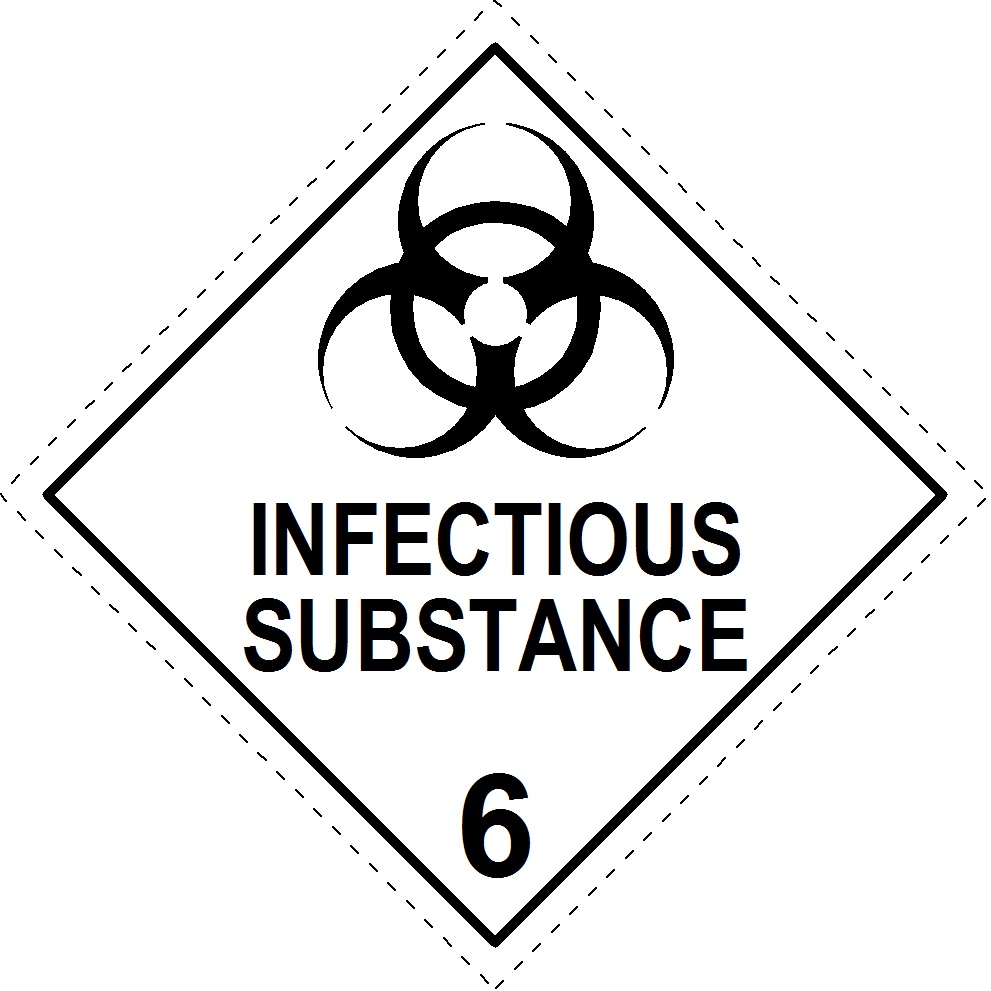
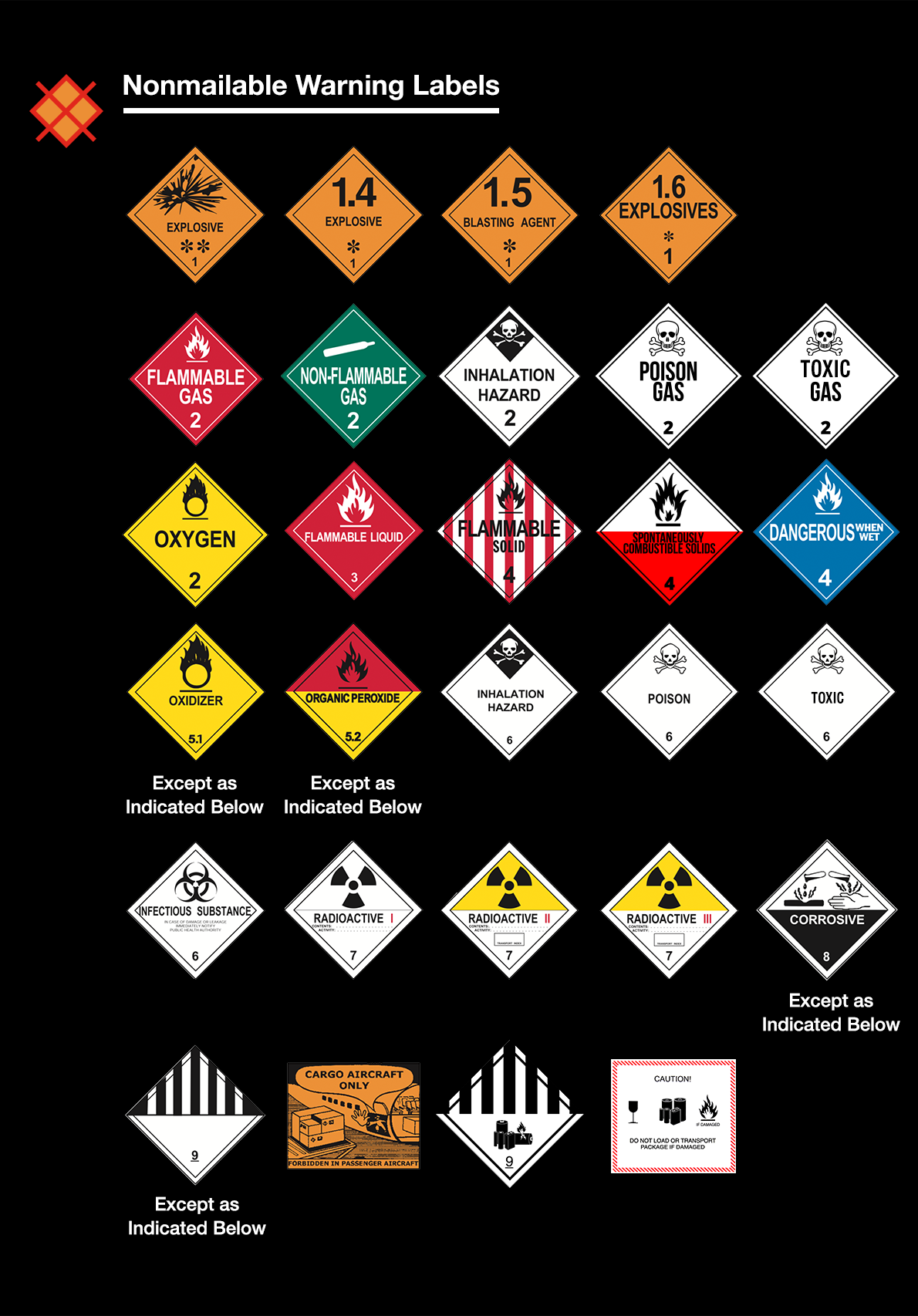
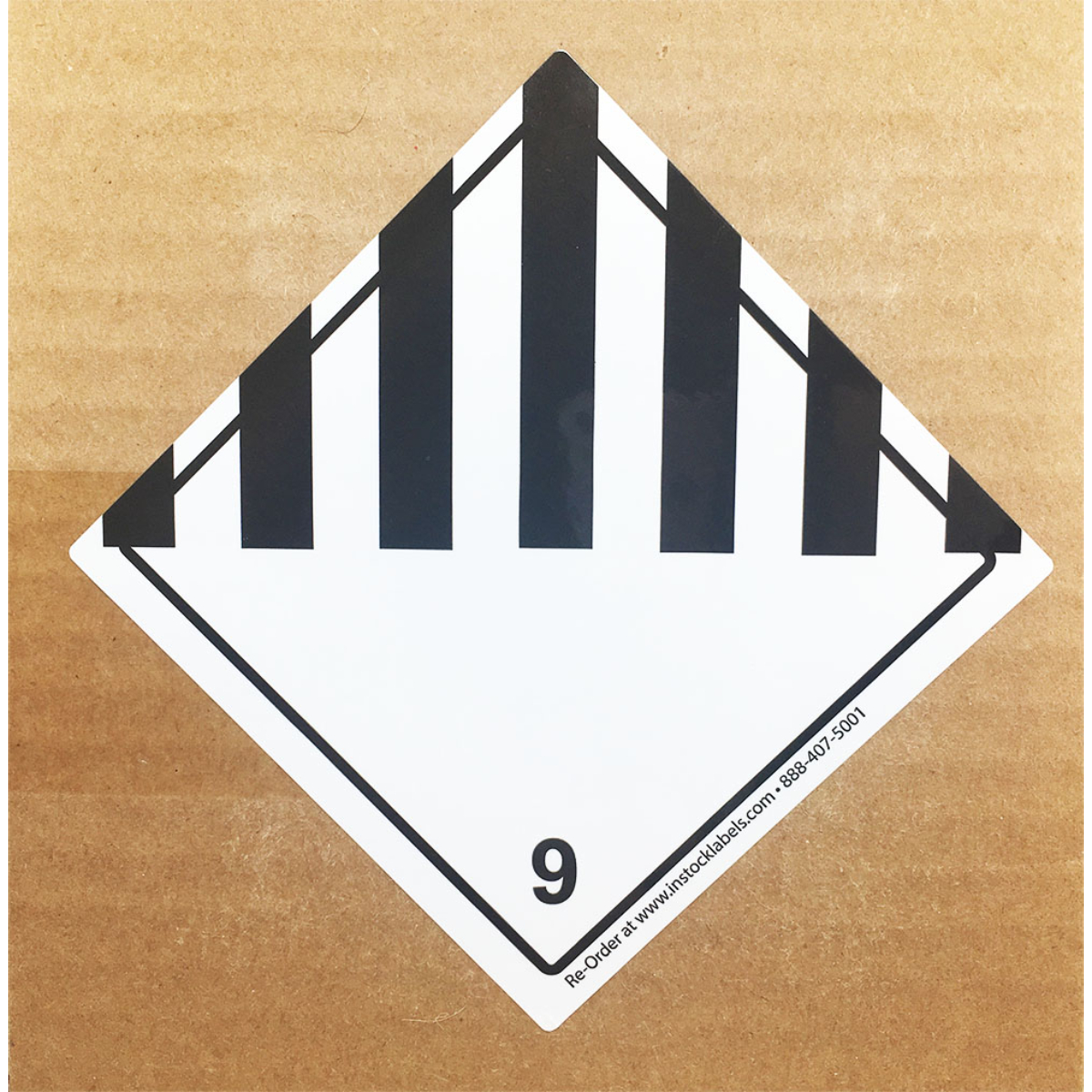
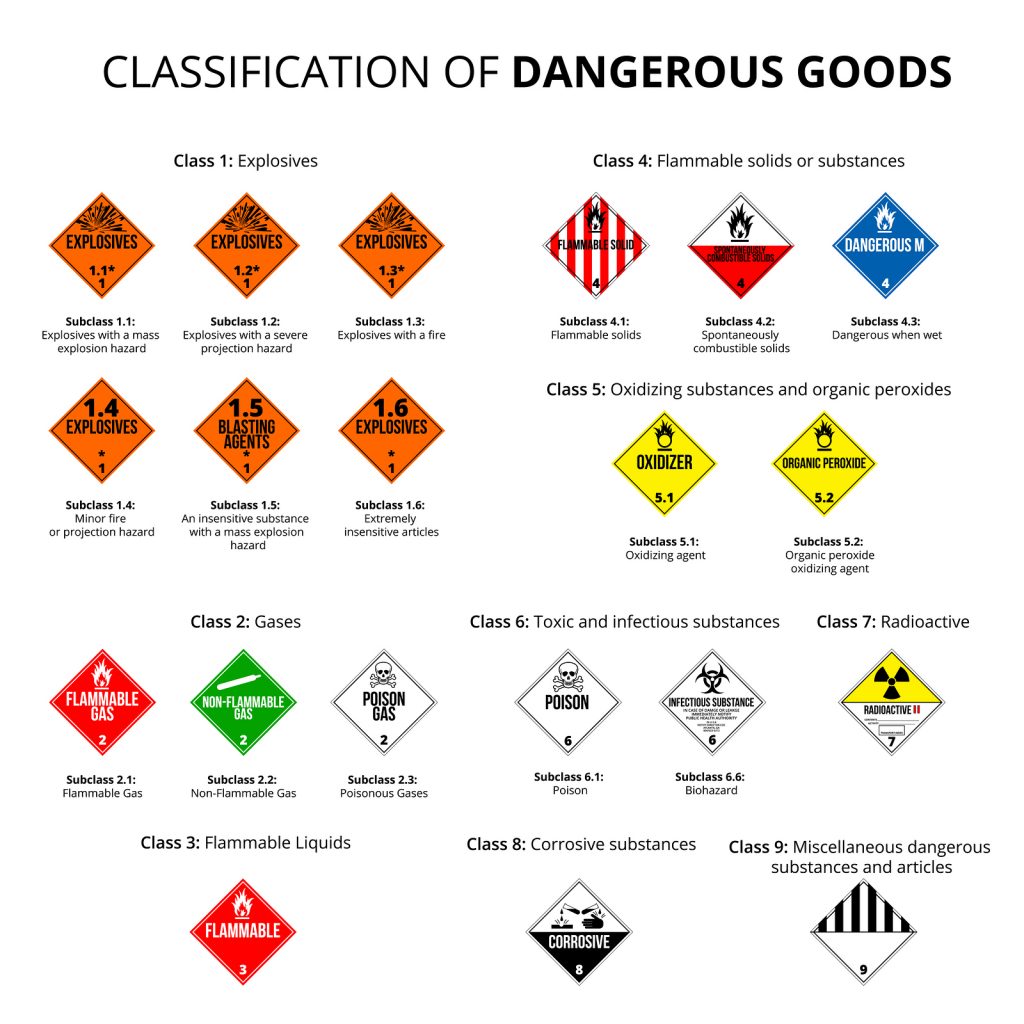
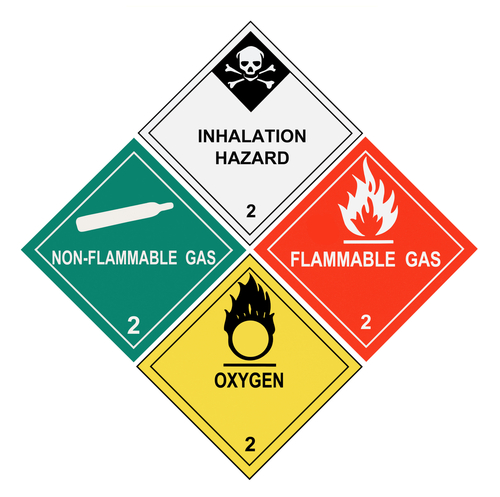







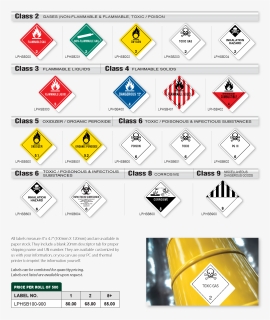


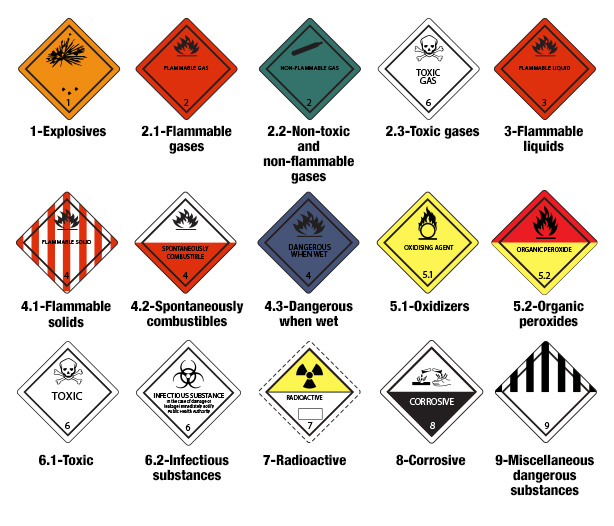

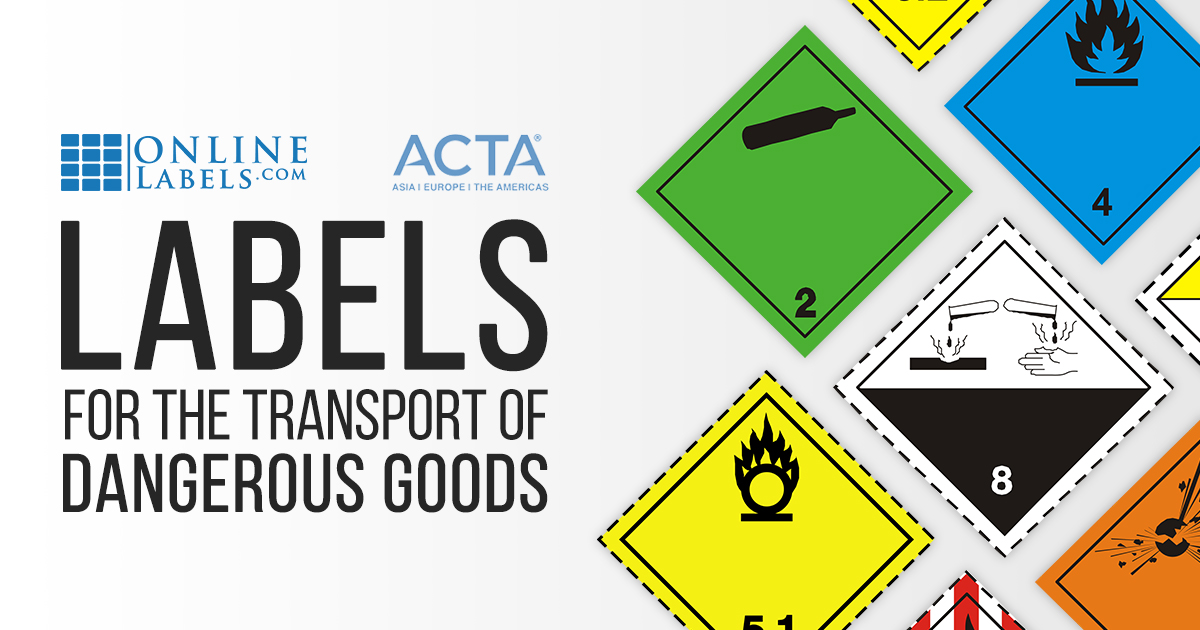
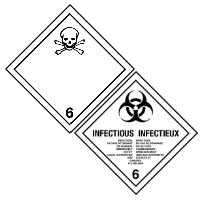

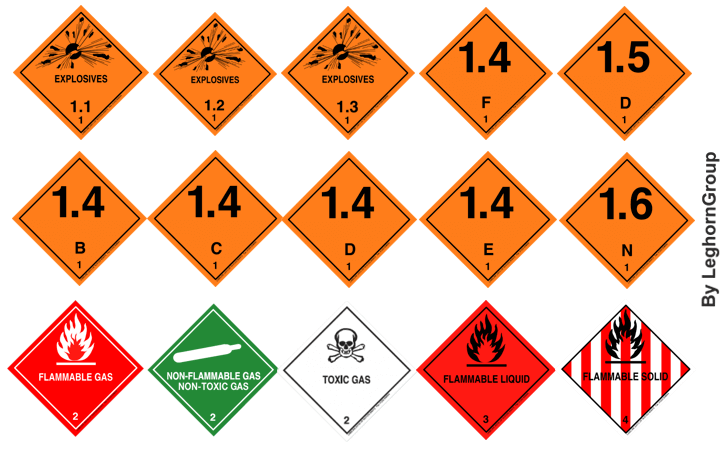
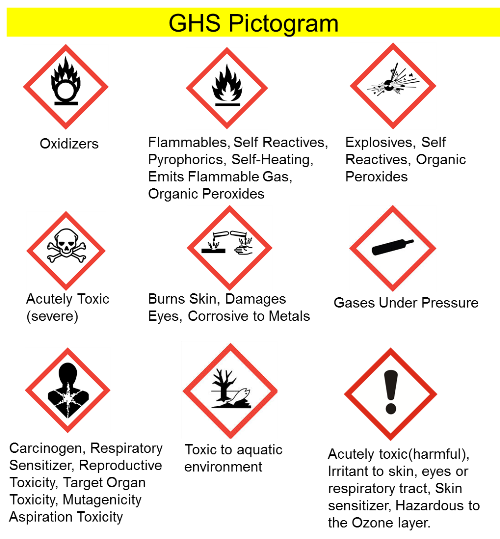
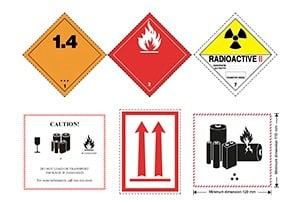

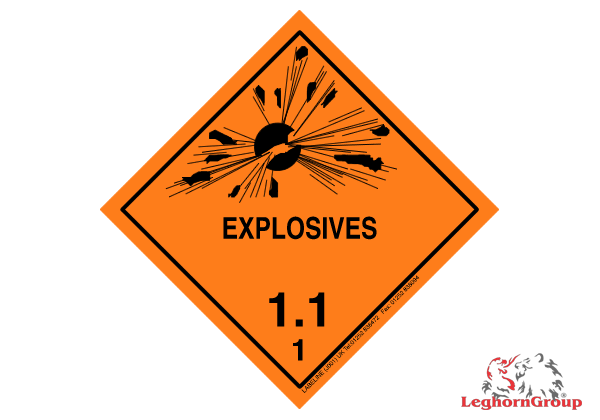
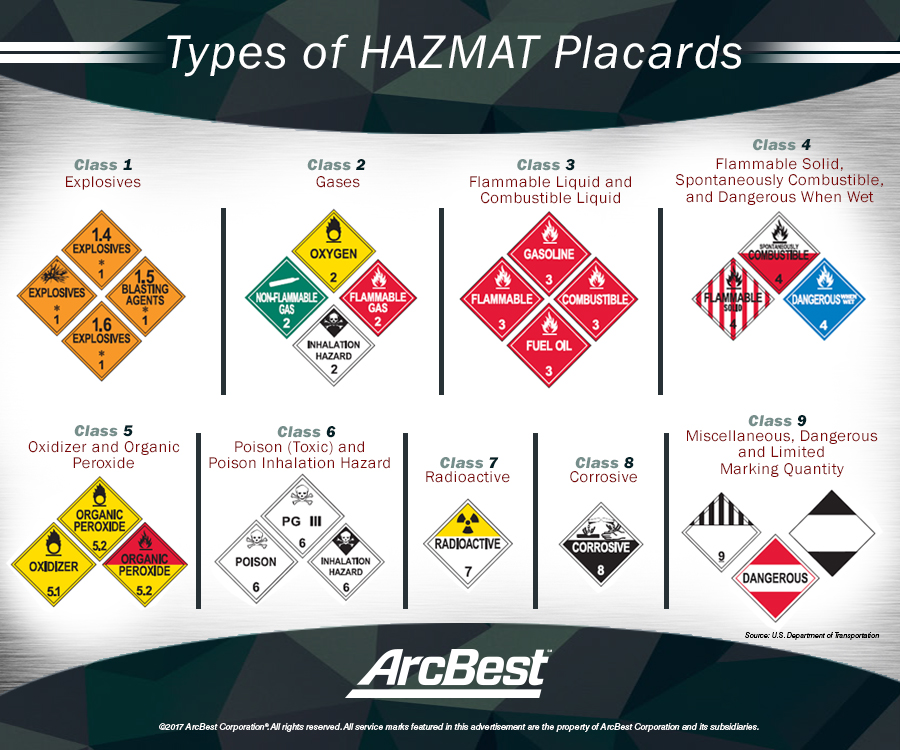
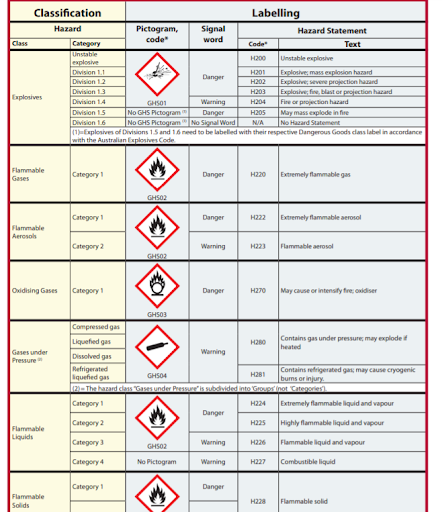



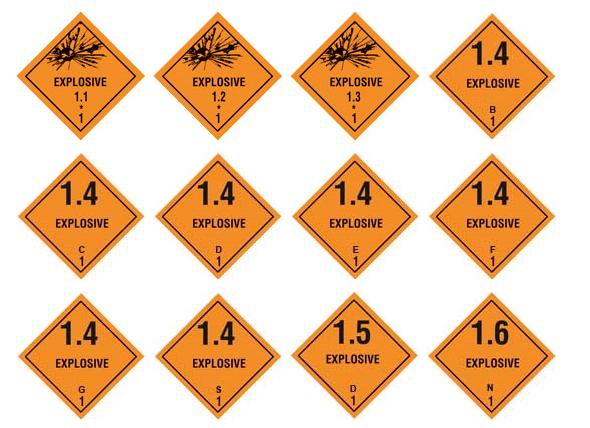


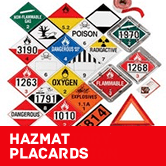
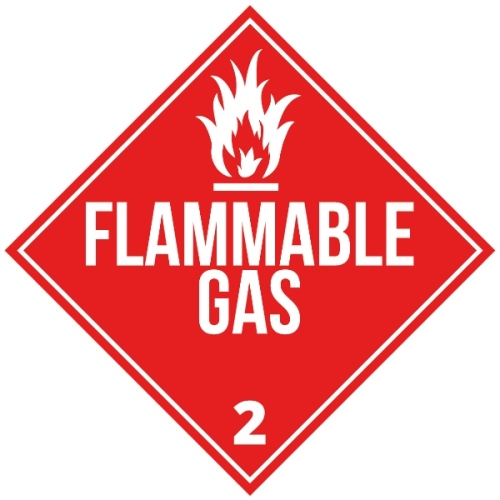

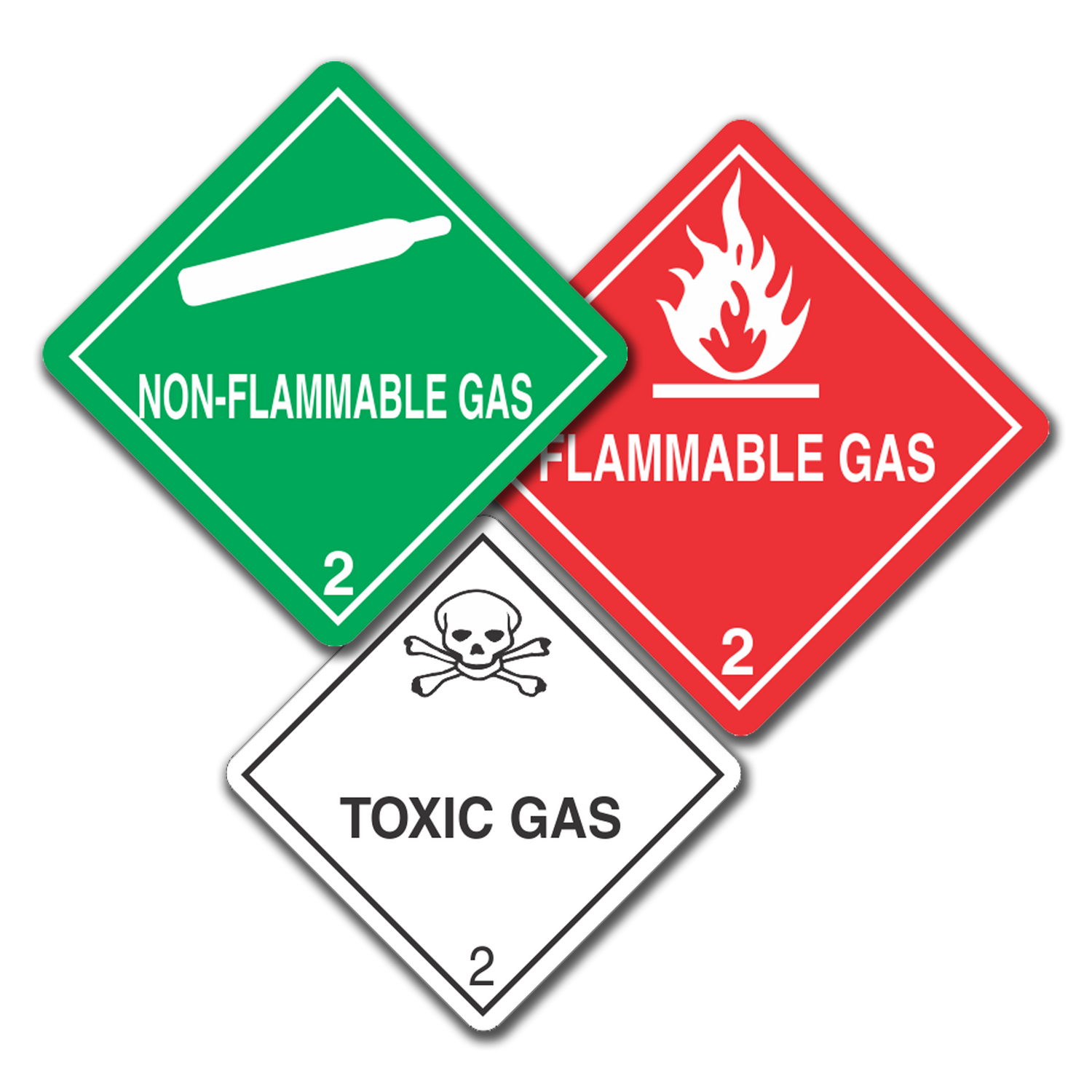


Post a Comment for "44 dangerous goods class labels"